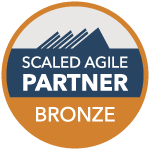category
Scrum Product Owner Certified (Including Exam)

Type
Virtual
Classroom ILT
Skill Level
Available dates
Learning Path
Virtual
Duration
1 Day

TYPE
Virtual
Classroom ILT
LEARNING PATH
SKILL LEVEL
DURATION
AVAILABLE DATES
Choose date
R12 400,00
Price excluding VAT
Introduction
Scrum Product Owner Certified (SPOC™) certification is designed to confirm applicants practical and working knowledge of Scrum that equips them to handle the business aspects and stakeholders in a Scrum environment.
Product Owner represents the interests of the stakeholders in the Scrum Team. Commonly called ‘the voice of the customer’, the Product Owner is responsible for ensuring clear communication of product or service functionality requirements. The Product Owner also prioritizes the requirements from the point of view of an end user, for maximum business benefit, defines the Acceptance Criteria, and ensuring those criteria are met.
SCRUMstudy’s online live proctored exams allow you to take your certification exams from the comfort of your home using a webcam and a reliable internet connection.
Professional Development Units (PDUs) 14.
Audience Profile
This is highly recommended for anyone in a company who works in a Scrum Project and interfaces with business stakeholders or works as a Product Owner in a Scrum Team. This will also be very useful for those who are interested in understanding the details of Scrum and how this framework could be used effectively.
Pre-requisites
There is no formal prerequisite for this certification. However, Scrum Developer Certified (SDC™) or Scrum Master Certified (SMC™) professionals will be able to better understand the concepts required for this certification exam.
Course objectives
After completing this course, students will be able to:
- Delegates will be familiar with the concepts, advantages, and challenges of the Scrum framework
- Delegates will be adept in handling the business aspects of the Scrum framework and business stakeholder engagement
- Delegates will be equipped with the knowledge needed to play the role of a Product Owner in their organizations and help their organizations adopt the Scrum framework. This knowledge will include a functional understanding of the other roles in Scrum
- Delegates will have knowledge pertaining to and the ability to anticipate issues related to the practical implementation of Scrum
Course content
| Session 1: Agile and Scrum Overview | |
|
|
|
|
|
|
|
|
| Session 2: Scrum Roles | |
|
|
|
|
|
|
| Session 3: Planning in Scrum | |
|
|
|
|
|
|
|
|
|
|
|
|
|
|
| Session 4: Sprint Planning |
|
|
|
|
|
|
| Session 5: Implementation of Scrum | |
|
|
|
|
| Session 6: Scrum for Large Projects |
|
|
|
|
|
|
Associated certifications and exam
This course prepares students to write the SCRUMstuy’s Scrum Product Owner Certified Exam.
On successful completion of this course students will receive a Torque IT attendance certificate.

Scrum Overview
Scrum is the most popular Agile framework. It is an adaptive, iterative, fast, flexible, and effective methodology designed to deliver significant value quickly and throughout a project.
Scrum ensures transparency in communication and creates an environment of collective accountability and continuous progress. The Scrum framework, as described in the Scrum Body of Knowledge Guide (SBOK™), is structured in such a way that it supports product and service development in all types of industries and in any type of project, irrespective of its complexity.
A Scrum project involves a collaborative effort to create a new product, service, or other result as defined in the Project Vision Statement. Projects are impacted by constraints of time, cost, scope, quality, resources, organizational capabilities, and other limitations that make them difficult to plan, execute, manage, and ultimately succeed. However, successful implementation of the results of a finished project provides significant business benefits to an organization. It is therefore important for organizations to select and practice an appropriate project delivery methodology.
A key strength of Scrum lies in its use of cross-functional, self-organized, and empowered teams who divide and execute their work in short, concentrated work cycles called Sprints. The focus of Scrum on value-driven delivery helps Scrum Teams deliver results as early in the project as possible.
Scrum vs. Traditional Project Management Traditional project management emphasizes on conducting detailed upfront planning for the project with emphasis on fixing the scope, cost and schedule – and managing those parameters. Whereas, Scrum encourages data-based, iterative decision making in which the primary focus is on delivering products that satisfy customer requirements.
To deliver the greatest amount of value in the shortest amount of time, Scrum promotes prioritization and Time-boxing over fixing the scope, cost and schedule of a project. An important feature of Scrum is self-organization, which allows the individuals who are actually doing the work to estimate and take ownership of tasks.
